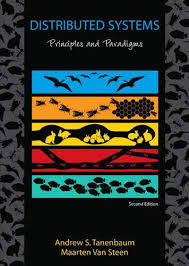White Paper: Mastering Distributed Systems with Tanenbaum's Comprehensive Guide
Abstract
Distributed systems have become ubiquitous in modern computing, powering everything from the internet to cloud computing. Tanenbaum's book, "Distributed Systems: Principles and Paradigms," provides a comprehensive overview of the fundamental concepts and techniques underlying distributed systems. This white paper delves into the key topics covered in the book, exploring how to design, implement, and analyze distributed systems effectively.
Introduction
Distributed systems are composed of multiple independent computers that communicate and coordinate to achieve a common goal. Understanding the principles and paradigms of distributed systems is essential for building scalable, reliable, and efficient applications. Tanenbaum's book offers a deep dive into the core concepts, challenges, and solutions in the field of distributed systems.
Key Concepts Covered in Tanenbaum's Book
- Fundamental Concepts:
- Client-Server Model: A classic architecture where clients request services from servers.
- Peer-to-Peer Systems: Systems where nodes can act as both clients and servers.
- Distributed Objects: Objects that can be accessed remotely.
- Communication and Synchronization:
- Remote Procedure Calls (RPC): A mechanism for invoking procedures on remote machines.
- Message Passing: A fundamental communication paradigm for distributed systems.
- Synchronization Primitives: Techniques for coordinating access to shared resources, such as mutexes and semaphores.
- Distributed Mutual Exclusion: Algorithms for ensuring that only one process can access a shared resource at a time.
- Distributed File Systems:
- File Sharing: Mechanisms for sharing files across multiple machines.
- Distributed File Systems: File systems that span multiple machines.
- Consistency Models: Understanding different consistency models for distributed file systems.
- Distributed Shared Memory:
- Shared Memory: A mechanism for sharing memory across multiple machines.
- Cache Coherence: Ensuring consistency of shared data across multiple caches.
- Distributed Transactions:
- ACID Properties: Atomicity, Consistency, Isolation, and Durability.
- Two-Phase Commit Protocol: A distributed protocol for ensuring atomicity.
- Distributed Deadlocks: Detecting and preventing deadlocks in distributed systems.
- Fault Tolerance and Reliability:
- Replication: Replicating data across multiple nodes for fault tolerance.
- Redundancy: Adding redundancy to critical components to improve reliability.
- Failure Detection and Recovery: Mechanisms for detecting and recovering from failures.
Practical Applications of Distributed Systems
Distributed systems are used in a wide range of applications, including:
- Cloud Computing: Building scalable and reliable cloud services.
- Web Applications: Developing large-scale web applications.
- Big Data: Processing and analyzing massive datasets.
- Internet of Things (IoT): Connecting and managing billions of devices.
- Blockchain Technology: Enabling secure and transparent transactions.
Conclusion
Tanenbaum's "Distributed Systems" provides a comprehensive and insightful exploration of the field. By understanding the core concepts and techniques, you can design, implement, and analyze complex distributed systems. As technology continues to evolve, the importance of distributed systems will only grow, making it essential to stay up-to-date with the latest advancements and best practices.
References
- Tanenbaum, A. S. (2002). Distributed Systems: Principles and Paradigms. Prentice Hall.
Additional Resources:
- Online Courses: Platforms like Coursera, edX, and Udemy offer a variety of courses on distributed systems and cloud computing.
- Open-Source Projects: Contribute to open-source projects like Apache Hadoop, Apache Kafka, and Kubernetes to gain practical experience.
- Research Papers and Conferences: Stay updated with the latest research and industry trends by reading academic papers and attending conferences.
By combining the theoretical knowledge from Tanenbaum's book with practical experience and continuous learning, you can excel in the field of distributed systems and contribute to the development of innovative and scalable applications.



